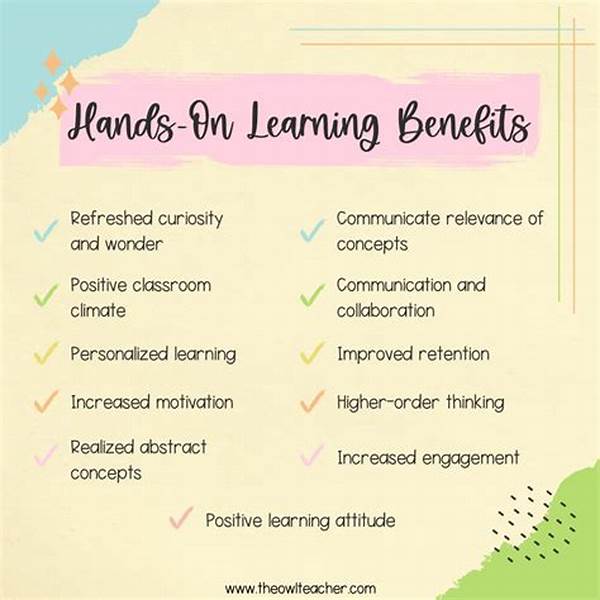H1: Hands-On Learning Benefits in Montessori Method
Read More : Aparatus Montessori
The Montessori method, a trendsetting approach in education, emphasizes learning through direct experience rather than rote memorization. In today’s fast-paced, technology-driven world, parents and educators are constantly searching for effective educational methods that truly engage children and foster independence. Enter the Montessori method—a pedagogical movement that’s changing the educational landscape. Hands-on learning benefits in Montessori Method are countless, as this approach taps into children’s natural curiosity, empowering them to learn by doing. As a creative marketing blogger, you’re in luck because this approach is both charismatic and effective, making it irresistible to talk about with a touch of humor, a story-driven narrative, and an analytical lens.
Imagine a classroom where children choose tasks based on their interests, diving headfirst into learning opportunities that enthrall them. It sounds like a dreamy utopia, and yet, Montessori creates this engaging environment. The secret sauce is in its unique emphasis on hands-on learning. The Montessori method does not just stick to conventional tools, but instead adopts tactile learning with materials like beads, sandpaper letters, and puzzle maps. These tools not only make learning fun, but they also stimulate cognitive growth by engaging multiple senses. Let’s not forget the anecdote of Timmy, the 4-year-old who learned to pour juice through trial and error and a bit of apple juice on the carpet—not included in the lesson plan, but a learning adventure nonetheless!
In a surprising statistic, research reveals that students educated through the Montessori method often outperform their peers later in life. This is due in part to hands-on learning benefits in Montessori method, which develops critical thinking skills and boosts problem-solving abilities. These prepare students for the challenges of the real world far better than traditional teaching methods. The emotional connection students develop with their learning process fosters a lifelong love and curiosity for knowledge.
H2: Montessori’s Revolutionary Approach to Hands-On Learning—Description: Understanding the Montessori Revolution
The Montessori method remains at the forefront of educational innovation due to its child-centered approach and commitment to fostering independence through experiential learning. This method propels children forward by encouraging them to ask questions and explore answers through direct interaction with their environment. Parents are raving, and testimonials flooding the blogosphere, as more families witness the transformation their children undergo in Montessori settings—how hands-on learning benefits in Montessori method capture a child’s natural exuberance and channel it into purposeful activities.
H2: The Impact of Montessori on Early Childhood Development
Research backs the testimonials. A study conducted by Lillard in 2017 highlights how Montessori students excel in social skills, academic learning, and emotional maturity. This is attributed to the freedom of choice coupled with responsibilities within the Montessori classroom structure. This approach fosters crucial decision-making skills that prepare children for real-life scenarios in and out of the academic environment.
H3: The Role of Teachers in Montessori Classrooms
Teachers in Montessori classrooms act as guides rather than traditional instructors. Their role is to observe and introduce new challenges based on each child’s progress, ensuring continuous growth without the pressure and competition of grades. This reduces stress and encourages a positive emotional connection to the learning journey. Such hands-on learning benefits in Montessori method also mean that teachers play an essential part in crafting well-rounded individuals.
In many ways, the popularity of Montessori isn’t just due to the method itself; it’s how it makes both students and parents feel. It promotes confidence, reflection, and mutual respect among peers—a kind of atmosphere that’s seldom replicated elsewhere. With growing awareness and the age-old tradition of storytelling making a comeback in educational narratives, we see the Montessori method weaving its tales into the very fabric of modern education.
—Five Actions to Embrace the Montessori Method
The Montessori method has undoubtedly made its mark, leaving a blueprint for future educational trends. Parents love the empowering approach, and kids thrive in the flexible, encouraging atmosphere. Adopting hands-on learning benefits in Montessori method is a transformative journey, not just for kids but for families and educators alike. Let’s dive into more captivating insights to improve child learning experiences.
—H2: Five Key Points about Montessori Hands-On Learning
The essence of the Montessori method is not just in its application but in its philosophy—that we learn better by doing than merely observing. You’ll often find children absorbed in activities as simple as tying shoelaces, completely unaware of the learning milestone they’re achieving. This philosophy brings with it a wave of freshness, creativity, and an innate sense of curiosity that is often missing in conventional learning environments.
With today’s educators more open to non-traditional methods, the hands-on learning benefits in Montessori method offer a promising future. The Montessori classroom, acting as a microcosm of society, allows children to learn life’s rhythms at their own pace. It’s like children are given the stage to star in their educational journey. What’s more engaging than being the protagonist of your learning adventure? It’s high time we reconsidered our conventional methods and gave room for creativity to flourish in education.
